Cell Worksheet
Use the cell worksheets with our MatchCard Unit Studies for kids in 3rd to 8th grade.
Free Download Below
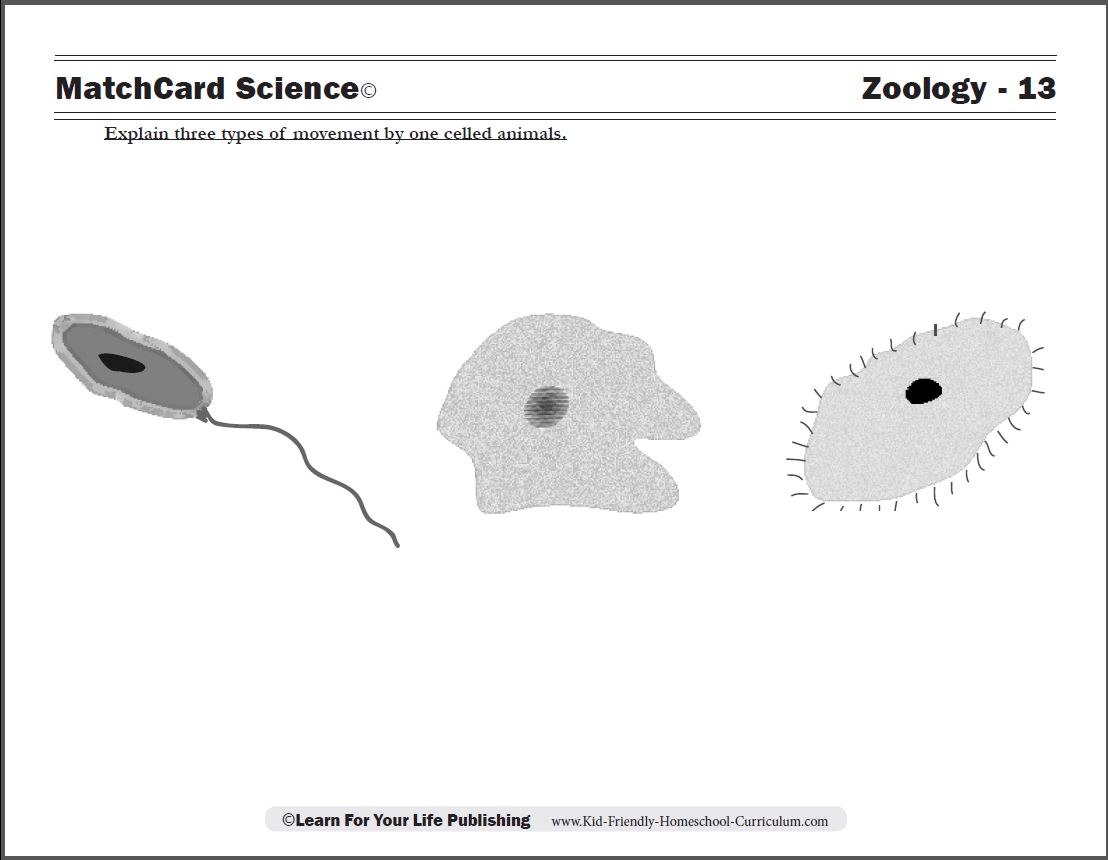

Our Other Cell Worksheets
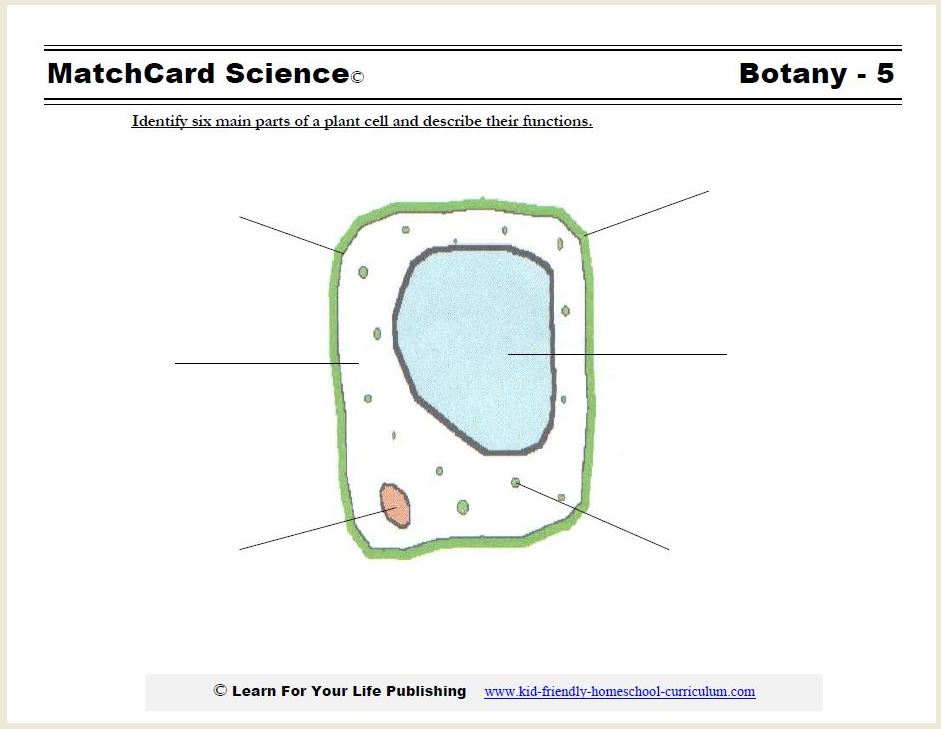 Plant Cell Worksheet
Plant Cell Worksheet
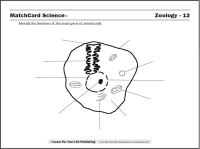 Animal Cell Worksheet
Animal Cell Worksheet
MatchCard Science Cell Movement Worksheet
Objective: Explain three types of movement of unicellar animals.MatchCard: Download below.
MatchCard Information Pieces describe the type of movement and type of cell that uses that form of transportation.
Print the Cell Movement MatchCard
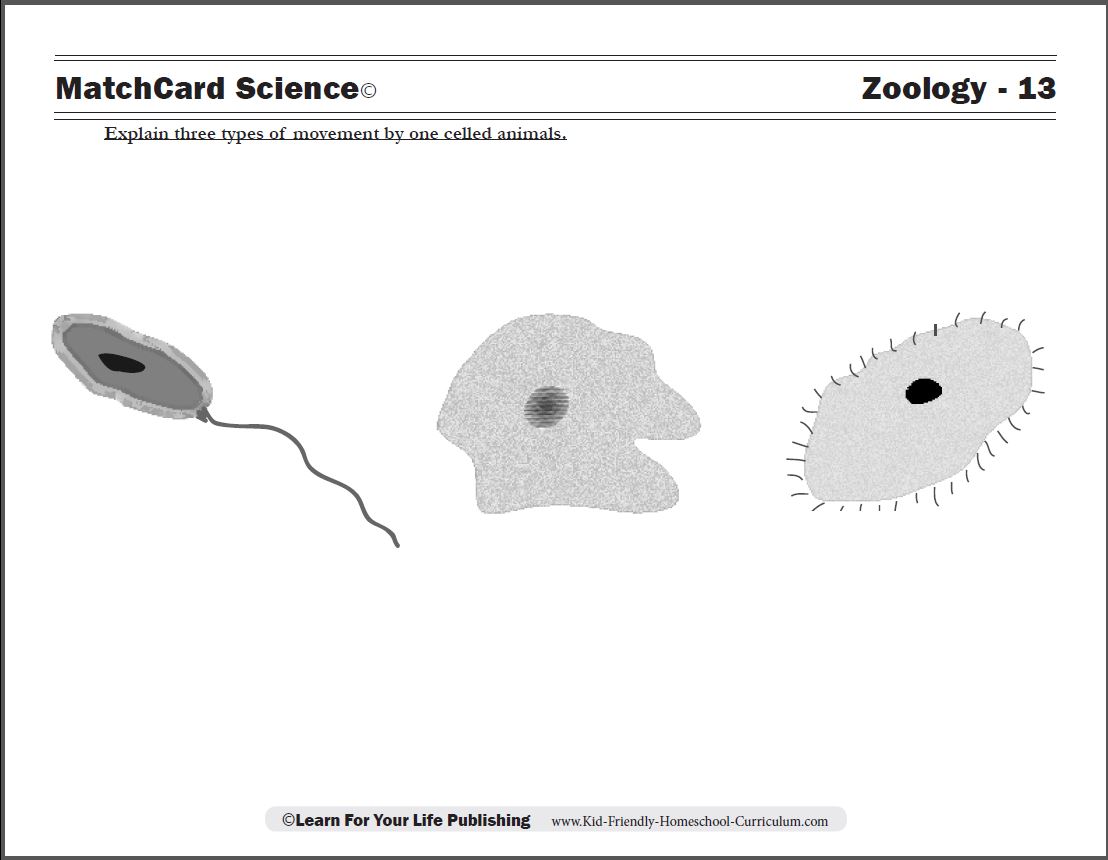

Click image to go to download.
This is MatchCard #13 of the Zoology Unit Study. Find more information on MatchCard Science below.
Learn the Three Types of Cell Movements
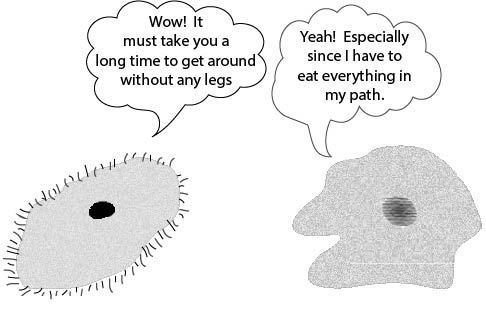
Flagellates
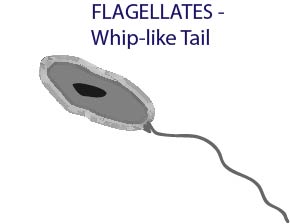
Sperm cells are one of the most commonly recognized types of single celled organisms that have flagella.
Here is a Youtube clip showing a number of different flagellages and cilliates in motion: Flagella and Cillia YouTube
A somewhat rough and inaccurate comparison can be made to a flagella and the long tail of an excited dog. The whole body of some dogs move when their tail begins to wag excitedly.
Amoeba
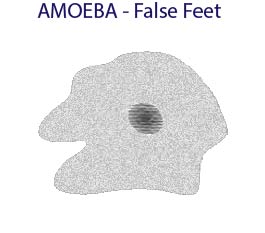
Macrophages are large white cells that are also transported through the human body by amoeboid movement. They use the same form of projection to engulf foreign matter.
Ciliates
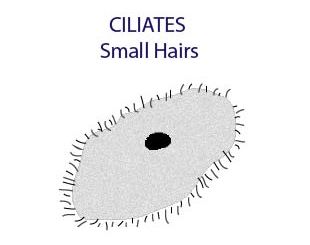
Ciliates are one of the most common organisms found in pond water. While the human body does not have single-celled ciliates, it does have some multi-cellular organs that also use cilia. The lining of the lungs and the lining of a female's fallopian tubes both have cilia. The cilia of the lungs causes movement of mucous and fluid away from the air sacs. The cilia in the fallopian tubes propels a fertilized ovum towards the uterus.
Watch Cellular Movement
Pond Water: A World In A Drop
If you can, look at pond water under a microscope or large powered magnifying class. You will likely be rewarded with seeing one-celled organisms move through the water. Can you recognize if they are flagellates, ciliates, or amoebas?Beneath the Nail
You may also like to take some of the scraping beneath your finger nail, mix it with a drop or two of water, and look at it under the slide. Yuck! A great way to reinforce the value of washing your hands and keeping your finger nails clean.A Little Fun: Cellular Charades
After learning about the three types of cellular movement, you might want to let your students play charades. Can they guess what type of cell movement the other student is trying to emulate?MatchCard Science
How To Use MatchCards

Download the FREE MatchCard Science Instructor's Guide and see how MatchCards can make building their science knowledge base fun.
12 Science Unit Studies

Chemistry is only one of twelve complete unit studies for kids in 3rd to 8th grade.
Comprehensive objectives, hands-on projects, suggested science fair experiments, and the fun game-like MatchCards keep them interested in learning science. See all twelve MatchCard Science Unit Studies.
About Our Site
Hands-On Learning














